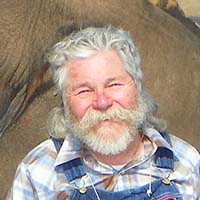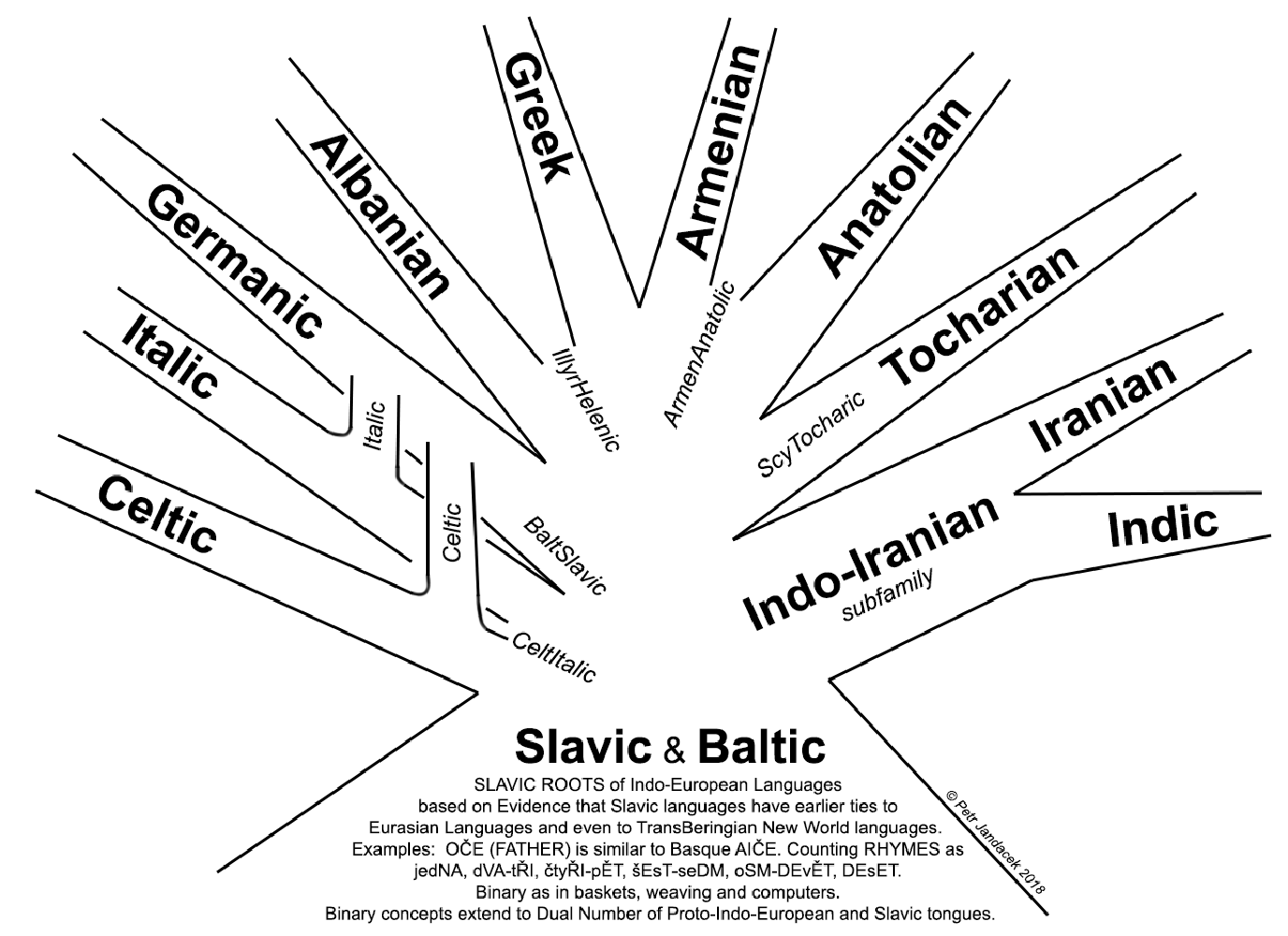
Tree of Indo-European languages
Apologia for Jandacek’s tree of Indo-European languages 2018
SLAVIC ROOTS of Indo-European Languages based on Evidence that Slavic languages have earlier ties to Eurasian Languages and even to TransBeringian New World languages. Examples: OČE (FATHER) is similar to Basque AIČE. Counting RHYMES as jedNA, dVA-tŘI, čtyŘI-pĚT, šEsT-seDM, oSM-DEvĚT, DEsET. Binary as in baskets,weaving and computers. Binary concepts extend to Dual Number of Proto-Indo-European and Slavic tongues…
Etymology of many words is evidently Slavic as in FRIEND = PRI-JAT-el. Across Eurasia and TransBeringia the words for Mammoth/Elephant are Slav-like: SLON, SIONg (China), ZILONis (Latvia), ZEHON (Ethiopia), TSONoqua (Athabaskan) (Canada/Alaska), and almost as a parody on the proboscideans – the Celtic word for NOSE is SRON. What used to be called the dichotomy of SATEM and CENTUM is explained by SloVenetic I < grapheme which can be read as VeverICa or VeverKa. The words for “FATHER“ in Slavic languages (mentioned above) OTEC, OČE are more similar to languages of other peoples rather than to Latinic and Germanic PATER, VATER, FATHER etc.
Some may protest that I had used jedNA and dVA in counting-above instead of jeden and dva but my counting is justified in dvacet jedNA, dvacet dVA, 31 and 32…51 and 52 and so on and on…
Slavic languages kept most (6 or 7) of the 8 original grammatical cases of Porto-Indo-European. Warnow et al propose that Germanic languages were spawned in the Balto-Slavic milieu… and subsequently were modified by Celtic, and later Italic languages. Thus, for these reasons and many others it is more fitting to recognize Slavic languages as roots rather than branches of Indo-European languages.
Geography also suggests that Slavic tongues are at the CORE of Indo-European Languages.
Which languages do we find between Latin and Latvian? Which languages are spoken between Gaelic and Greek? What sort of languages are spoken between Punjabi and Portuguese? Which languages would one find between India and Iceland, or Sardinia and Sweden? No mater how you slice the Proto-Indo-European PIE you always slice through the center of Slovandom. Thus, the Indo-European languages are divided between the Slavic CORE and the PERIPHERY of other Indo-European languages.
Commerce in Late Middle Ages also indicates that Knaanic a Judaeo-Czech language was used throughout much of Germany. Trieste is Tržiště (Market) in Slavic.
Biology and genetics presented by Anton Perdih also indicate that Indo-Europeans have Slav-like ancestors.
Biota, or names of animals and plants which most of the Indo-Europeans share are those of forests and meadows and waters of Slavic Central Europe. Carp, beaver, swine, otter, wolf, elk, goose, elm, beech, willow and poplar, make up some of the biota of Central Europe and their Slavic name derivatives are used (with modifications) by Indo-Europeans where such creatures were absent.
Ancient European Peoples’ names often have hidden Slavic meanings. Thus, DRUID is DRVID as in DRVO (Slavic TREE or WOOD) – an appropriate name for “TREE WORSHIPERS” (remember that Latin lacked the grapheme “U” and used a “V” in its place).
VENETI of northern Italy were Sloveneti and the WENDS of northern Germany were Slowends.
And the Polabian Slavs lived along the Elbe all the way to the North Sea.
Basque and Slavic languages share Stone Age Lexicon. Many scholars consider the Basques (of north-east Spain and south-west France to be the ancient people of Europe. If the Slavs share many Stone Age words with these people it would imply that the Slavs had been in Europe very,very long time. Some words similar in Basque and Slavic are: astore=jestřáb (vulture/hawk), bejška=bejček (young bovine), erreka=řeka (stream), gar=žár (fire), gori=hoří (ablaze), čannel=člun (small boat), uztai=ůzda (animal restraint), bezpera=včera (yesterday), ipurdi=prdel (butt), aizkora=sekera (axe) and MANY MORE!
Thus, this data testifies to the location, antiquity and patrimony of Slavs in the Indo-European fraternity.

Petr Jandacek
Author
(505) 672-9562
Petr Jandacek
Louise Jandacek
Mailing Address
127 La Senda Road
Los Alamos, New Mexico
USA
87544


